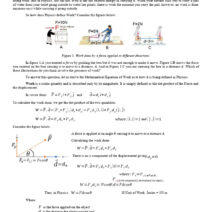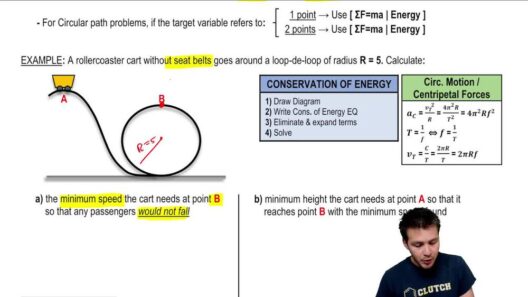The dance of the swinging pendulum is a captivating spectacle, embodying the principles of energy conservation that serve as fundamental cornerstones in the realms of physics and the natural world. Observing a pendulum in motion invites viewers to contemplate the seamless interchange between potential and kinetic energy. This interplay not only encapsulates a physical phenomenon but also serves as a gateway to understanding broader implications regarding energy, sustainability, and even climate change.
To comprehend how energy conservation manifests in a swinging pendulum, we must first delineate the two primary forms of energy involved: potential energy and kinetic energy. Potential energy is defined as energy stored within an object due to its position relative to other objects. In the case of a pendulum, when the bob is raised to one of its highest points, it acquires potential energy. This energy is contingent upon the height of the pendulum and the gravitational force acting upon it. The higher the pendulum is elevated, the more potential energy it possesses, calculated with the formula: PE = mgh, where ‘m’ signifies mass, ‘g’ denotes the acceleration due to gravity, and ‘h’ represents height.
Conversely, kinetic energy, denoted as KE, pertains to the energy of motion. It is calculated using the equation: KE = ½ mv², where ‘m’ is mass and ‘v’ is velocity. As the pendulum swings downward from its highest point, the potential energy begins to transform into kinetic energy. At the lowest point in its arc, all potential energy has converted to kinetic energy, resulting in maximum speed. The fluid transition between these two forms of energy showcases not just a physical movement but also the conservation of energy as dictated by the law of conservation—energy cannot be created nor destroyed, merely transformed from one form to another.
This dance of energy conservation becomes particularly fascinating when one considers the oscillatory nature of the pendulum. As the pendulum swings back and forth, potential energy and kinetic energy continuously interchange. At the apex of each swing, potential energy peaks while kinetic energy diminishes to zero momentarily. The nadir of the swing represents a full conversion, where kinetic energy reaches its zenith and potential energy dwindles to its minimum. This perpetual cycle underscores a broader theme present in various systems within nature, demonstrating efficiency and harmony in energy utilization.
This rhythmic exchange captivates observers not merely for its physical elegance but for its philosophically rich implications. How often does one overlook the delicate balance between energy forms in everyday life? The pendulum, with its simple mechanism, acts as a microcosm for understanding complex systems such as ecosystems and economies. In nature, similar transformations occur as energy flows from one entity to another—sunlight transforms into chemical energy through photosynthesis, animals convert this energy into kinetic motion, and heat energy dissipates back into the atmosphere.
Energy flow and transformation prompt essential discussions surrounding energy conservation, particularly amid escalating climate change urgency. As energy demands grow, the necessity for efficient resource utilization becomes paramount. The swinging pendulum metaphor illuminates pathways within energy systems where resources can be conserved rather than squandered. Sustainability techniques mirrored in natural processes advocate for a mindful approach to resource management, emphasizing closed-loop systems where potential and kinetic energies can be reciprocated effectively.
Moreover, the interaction between a simple pendulum and more complex systems reveals a deeper rationale for fascination. The laws governing energy within the pendulum apply broadly to a plethora of systems that define our world, from renewable energy harnessing mechanisms to the human body’s metabolic processes. Each instance demands a keen understanding of energy dynamics to mitigate environmental impacts while promoting sustainable practices.
A significant aspect of energy conservation is identifying where and how losses occur. In an idealized pendulum, no energy is lost to external factors such as air resistance or friction. However, in real-world scenarios, every system experiences energy dissipation. Specifically, as a pendulum swings, air resistance gradually robs it of kinetic energy until it comes to a halt. This truth exemplifies how systems—economic, ecological, mechanical—cannot operate purely on the notion of conservation without addressing efficiency and loss management. As we observe the pendulum, we are reminded that awareness of these nuances is imperative for fostering sustainability.
In the context of combating climate change, the principles gleaned from the pendulum emphasize a critical mandate: redistributing and reimagining energy usage will inevitably fortify our resilience against evolving ecological challenges. As energy conversions ripple through our connected world, practitioners are tasked with implementing practices that honor these dynamics, paving avenues toward a sustainable future.
Understanding energy conservation through the lens of a swinging pendulum offers a dual narrative: it provides an elegant yet straightforward representation of physical laws while simultaneously posing poignant questions regarding our relationship with energy. This intricate dance serves as a metaphor for efficiency, reminding humanity of its broader obligations to the planet—a call to action to balance societal demands with environmental stewardship, as we all bear the responsibility of keeping the pendulum of life in motion.







